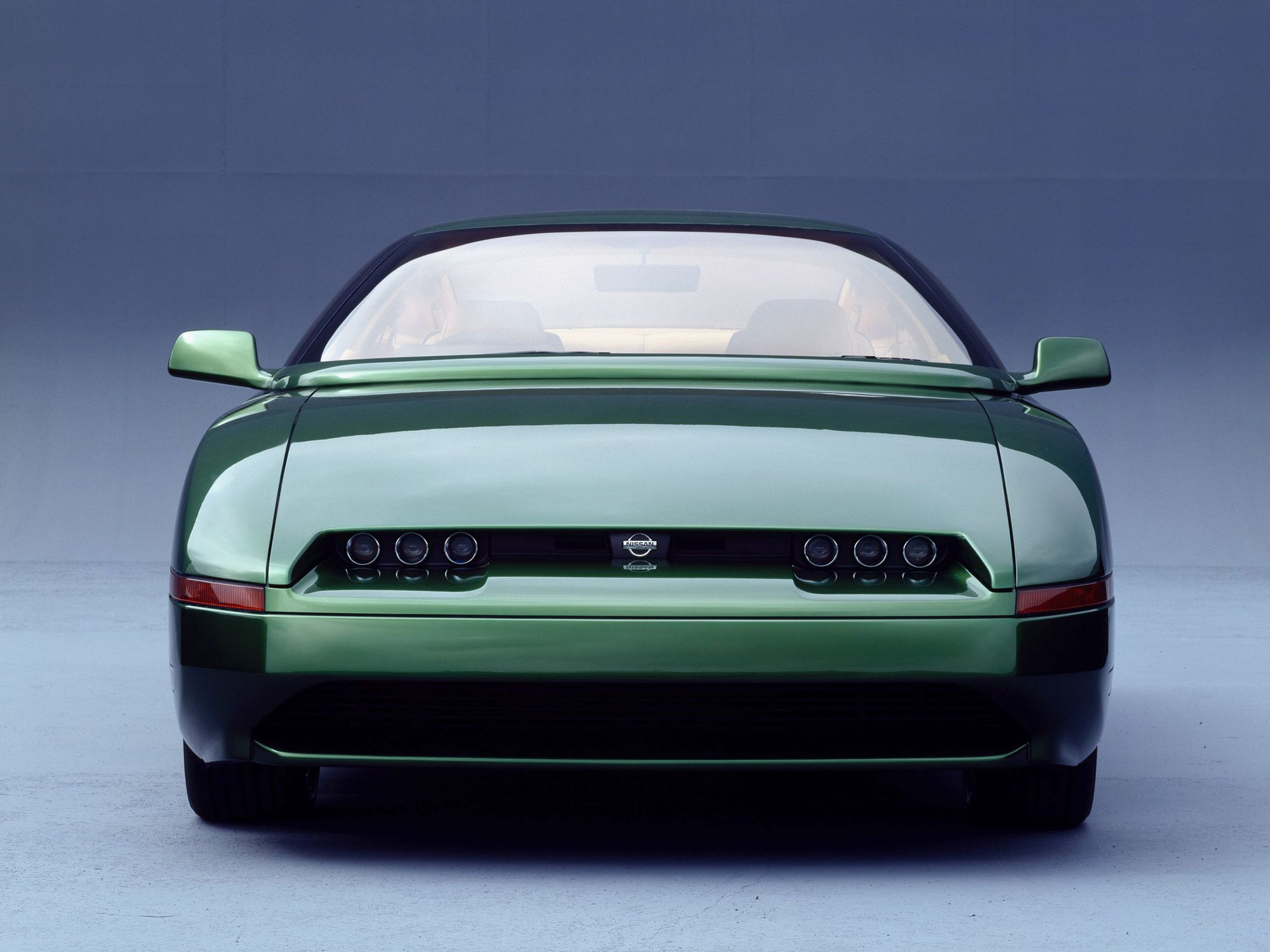Nissan AP-X: The Car That Could Have Been The Next ZX
Images: Nissan
With the increasing importance of aerodynamics and its impact on fuel efficiency and performance, the Japanese automobile giant Nissan, in the early 1990s, decided to explore the possibility of a highly aerodynamic coupe, one that could eventually provide some design directions for the replacement of both the very successful Nissan S-13 sports coupe, usually badged as the 200SX or 240SX, and the 300ZX (the Z32).

Thus, Nissan commissioned ace designer Marcello Gandini to develop a design of a classical front-engine rear-wheel-drive sports coupe powered by Nissan’s 247bhp DOHC 2987cc (182 cu in) V6, mated to a toroidal CVT automatic.

The Nissan AP-X (AP standing for ‘attractive performer’…), unveiled at the 1993 Frankfurt Motor Show, was a striking, metallic green coupe, which was 4.44 meters (175-inches) long and 1.8 meters (71-inches) wide.

Most importantly, the car had a very impressive drag coefficient of just 0.20, despite a not-so-low overall height of 1.22 meters (48-inches).
The exceptionally low drag-coefficient was accomplished with tapered rear fenders, a flat underbody, rounded and smooth leading edges and aerodynamically optimized alloy wheels.

Deliberately non-futuristic, the AP-X was a take on what could have been a Marcello Gandini design for a car that Nissan could have put into production right away, so most of the features and details were very much ‘production-ready’.
The B- and C-pillar design echoed that of the Nissan 200SX/240SX sports coupe from the same period.
Not surprisingly, Marcello Gandini’s signature rear wheel arches swept up to wrap around and over the indicators and rear lamps.

A bank of projector lamps set inset at the front with a small grille in between was the only break in a smooth flowing form that featured inset winding windows à la Alfa Romeo Carabo, so that problematic air flow issues at the door and window edges could be addressed.
All the windows were flush bonded to their respective frames, the roof levelling off to the high rear end. As the wipers and the base of the windscreen have always been a point of much aerodynamic turbulence, Gandini designed a small cowl to allow air to flow over.

In the profile of the lower part of the body, up to the beltline that is, there was something from the IsoRivolta Grifo 90, a design that he had executed a couple of years earlier.
Interestingly, the wheelbase of the AP-X concept, at 2.57 meters (101-inches), was identical to that of the 300ZX from then, as was the width, although overall length was shorter.




That was so as the car was based on the chassis of a 300ZX, yet providing 2+2 seating in a more compact vehicle, with smaller road encumbrance.
The AP-X also featured a series of state-of-the-art warning systems as represented by a car-to-car-distance warning system via millimetre-wave radar. Given the aerodynamics, the 2+2-seater AP-X, in theory, “promised the performance of a 300ZX and the fuel economy of a 200SX.”

Interestingly, the 300ZX was eventually replaced by the 350ZX in 2002, a car that was designed by one Ajay Panchal, a US-based designer of Indian origin.
Comments
Sign in or become a deRivaz & Ives member to join the conversation.
Just enter your email below to get a log in link.
